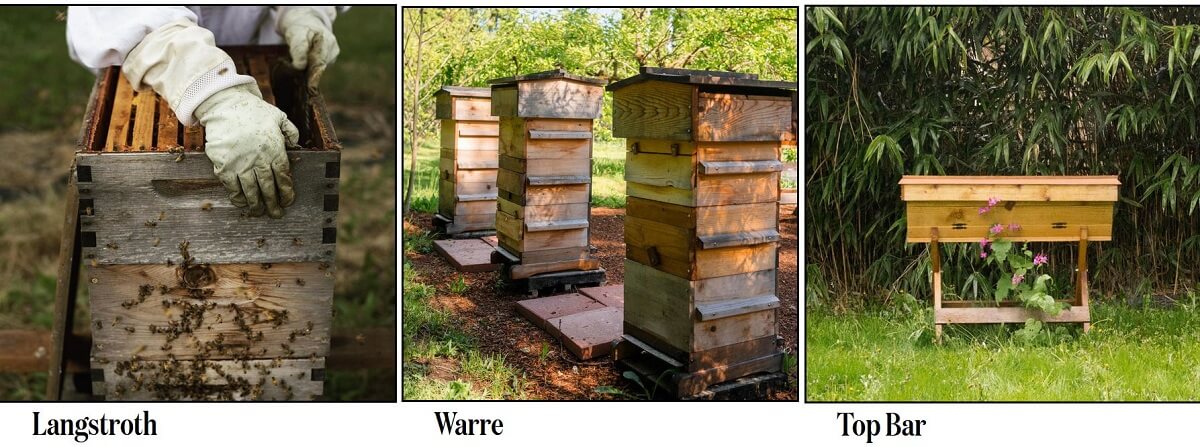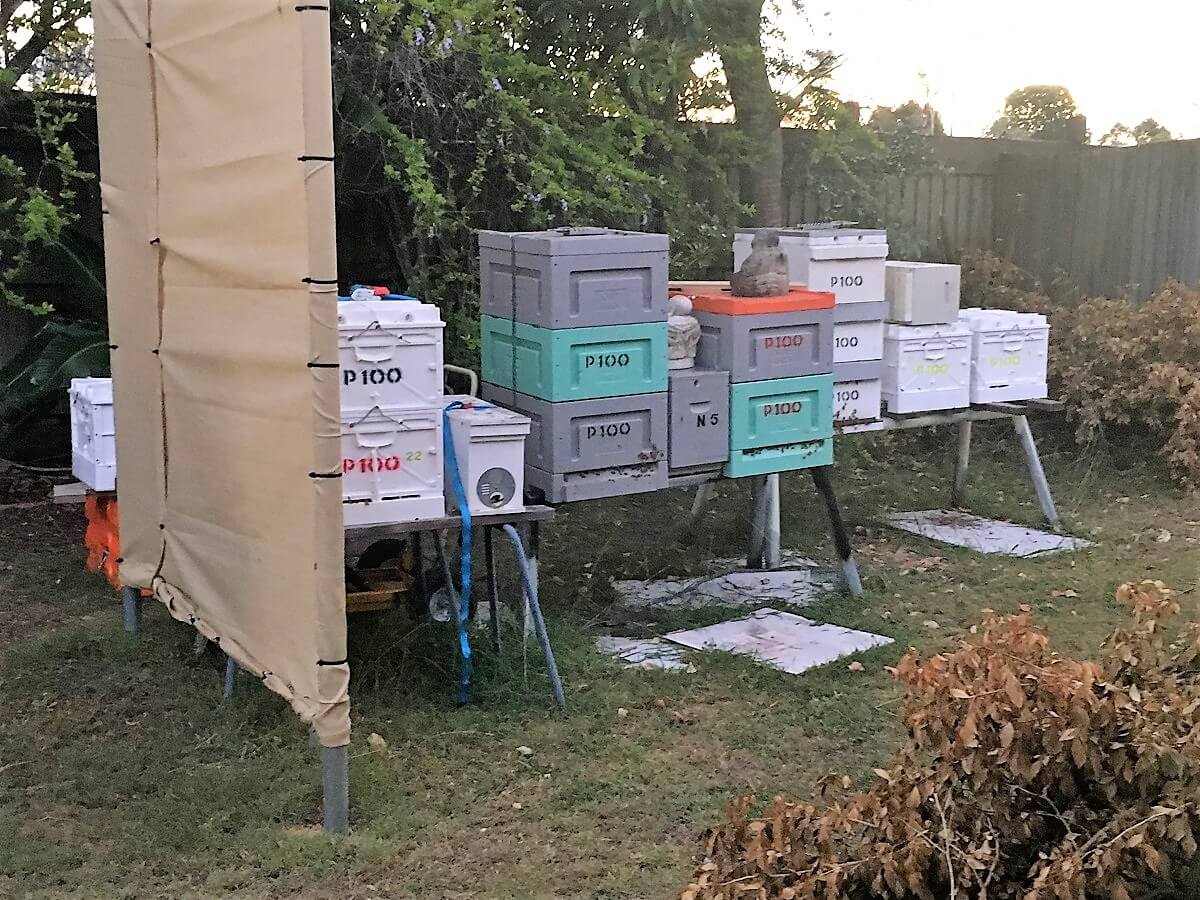Upcoming birthday? STOP. Read this first. We meet so many new beekeepers that have been gifted some sort of beekeeping supplies, usually a Flowhive flatpack starter kit and are now wondering what the next step is. Gifting someone a beehive can be a thoughtful and unique gift, but there are several things that can go wrong if not done properly.
Beekeeping can be an expensive hobby, and it’s important to consider the costs associated with it, such as essential beekeeping supplies, protective gear, and treatments for pests and diseases.
Gifting someone a hive is just the beginning so ensure they have enough funds to continue with the basic equipment, otherwise it can be cripplingly expensive for your special birthday person. To get started in beekeeping including a basic extractor your recipient will be up for around $1000 over time. You think I’m exaggerating but I’m not. This is the area that most loved ones reading this need to know before going down this path. Once you start down the path it is hard to pull up.
Basic beekeeping supplies to get started in beekeeping:
For all of the above beekeeping supplies, there are many different varieties of each item as there are many different ways to do beekeeping, extract honey and store frames. There is a wide quality range and therefore wide price range.
There are many different types (technology) of beekeeping hives available, and each has its own advantages and disadvantages. Choosing the right one depends on the individual beekeeper’s needs, goals, and preferences. Here are a few popular types of beekeeping hives to consider:

Ultimately, the choice of hive technology depends on the beekeeper’s experience level, the climate, and location, and the beekeeper’s goals and preferences. It is better if a new beekeeper goes to a field day as a gift to determine which type of bee hive they would prefer to use on their journey of learning. Usually a beekeeping club has a wide range of hive styles and material types to play around with.
Then there are 8 frame hives and 10 frame depending on your climate. Queensland warm climates need potentially more queen laying space than southern colder climates. So don’t go gifting someone an 8 frame hive because you found it on the internet, it will just swarm all through spring causing them no end of grief to them and their neighbours.
To learn more about equipment types subscribe to an annual subscription of The Australian Beekeeping Magazine or some books from the library.
Some people may have an allergic reaction to bee stings, so it’s important to make sure that the person you’re gifting a beehive to is not allergic to bees. If they haven’t been stung by a bee then going along to a few beekeeping club field days should get that box ticked off in a safe supportive environment with plenty of EpiPens nearby.
Then investigate any major allergies (not just localised swelling of a bee sting as that is expected when getting stung by a bee) that neighbours may have such as previous anaphylaxis reactions. Do this in the immediate vicinity of where the beehive is going to be located.
FYI – Bees will drink water from your neighbour’s pool where kids may be swimming and they will fly into outdoor lights that are near or pointing to the bee hives at night. So it’s important to consider others.
It’s crucial for the person who will receive the hive to be aware of the safety measures that need to be taken when handling bees, and to have the appropriate protective gear. Moving their first hive without experience can be deadly. If they are only watching YouTube and the experienced beekeepers are not wearing beekeeping suits, gloves or using a smoker, your Birthday person may think this is the norm and try the same. This can be very dangerous and things can go wrong quickly. Again, gifting a club membership or some resources can ensure your gifting intentions are safe for your loved one.
This is a big one! Your birthday loved one may have the enthusiasm and willingness to get into beekeeping, but if the person you’re gifting a beehive to does not have any experience with beekeeping, they may not know how to properly care for and maintain the hive, which can lead to the bees dying or swarming and the person becoming completely overwhelmed. If the giftee doesn’t have time to learn and start neglecting the hive and having swarms that they don’t know how to deal with it can be incredibly stressful and a sharp learning curve in learning on the fly. This style of learning is not everyone’s cup of tea so keep this in mind as the last thing you want to create is a stressful burden.
It took 12 months of field days, information seminars at the beekeeping club and one on one mentorship before I felt like I knew enough to stand on my own two feet. I threw a lot of time towards it. And I have changed the types of beekeeping supplies that I use a few times until I worked out what weights I could lift and what my preferences were. Read my blog on my first 12 months to get an idea of what is involved.
Books and YouTube are a good start to learning the basic fundamentals of beekeeping but it doesn’t prepare you enough for the complexities of beekeeping husbandry of a bee hive. Join your Birthday person up to a local beekeeping club like Northside Beekeepers Association in Brisbane North.
People gifting hives to loved ones don’t have the experience to know if their backyard is going to be suitable and safe for bees and people. If neighbours have serious allergies to bees or small kids that may have allergies then the Council may require you to move the bee hive to an alternate location. It is best for the Birthday person to learn through the beekeeping club where others put their hives on a suburban block and build a network so that if something goes wrong with the safety of your household or neighbouring blocks you have support to quickly move the bees to an alternate location. Again… join them up to the local beekeeping club so they can get some mentorship in this area.

Beekeeping is loads of fun but can be a time-consuming and demanding task, so it’s important to make sure that the person you’re gifting a beehive to has the time and commitment to properly care for the bees. Through spring and summer they will need to do a full inspection of the bee hive at least each month (preferably fortnightly when learning) for an hour or two. If that hive fills up with honey or bees it will swarm into neighbouring buildings and surrounds causing a costly nuisance for others. This is stressful and can be overwhelming.
But this is just the beginning…When you extract honey frames you need to process the frames, put them back into the hive, bottle the honey, then clean up all the gear and have somewhere to store all the gear needed for beekeeping. Ensuring the person will have the time needed for the hobby is essential as it’s not like other hobbies that you can shelve for a couple of months when you get busy.
Learn more about whats involved in learning about both beekeeping and beekeeping supplies in the first 12 months by checking out the list from Northside Beekeepers Association.
Depending on where the person lives, there may be legal restrictions on beekeeping. It’s important to check with local council authorities before gifting a beehive to ensure that it’s legal to house a hive of bees. The Brisbane City Council currently allows two bee hives on a suburban block but Moreton Shire Council allows none. Sunshine Coast Council has had changes to it’s beekeeping policies so you can see it’s not all a guarantee that hives are allowed on the birthday surburban block.
It is a requirement of the State Government that all livestock (which bees are a biosecurity livestock) are registered with Biosecurity Queensland. This is free for hobbyist but is an essential step in getting started. Go here to read more on registration.
Why not consider instead gifting them:
If beekeeping is for them and they love it, there will be a lifetime of more gifting of beekeeping supplies and crazy paraphernalia for years and years to come!! Then you can really go to town on treating them.